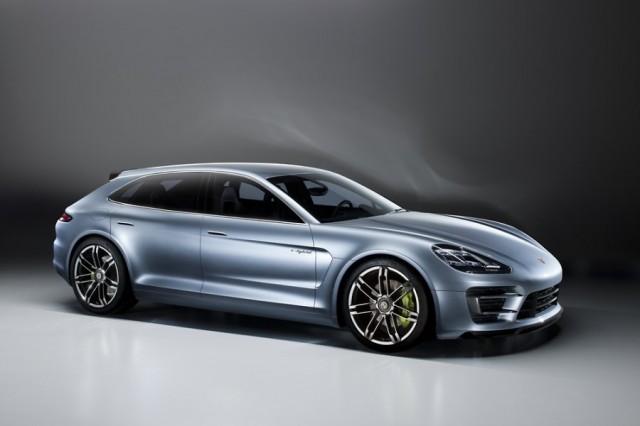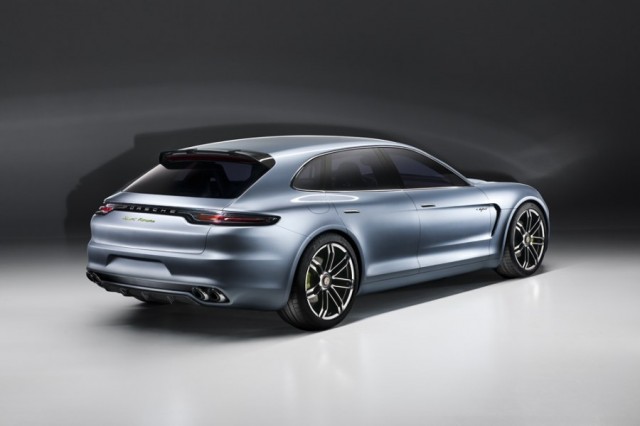The Panamera Sport Turismo undeniably looks better than the Panamera we’ve come to terms with, and its shocking that the one with the looks is the station wagon that can carry more luggage than the other ever could.
The new Porsche loses the external rear view mirrors for cameras and the direction indicators and sidelights are integrated in the C-Blades up front. The four-point LED headlights makes this Porsche one of the most aggressive designs we’ve seen from Stuttgart in a long time.
The new colour is what Porsche calls Liquid Metal Blue. The brake callipers and the 3 dimensional Sport Turismo badge are finished in ‘Acid Green’.
The Sport Turismo also highlights progress made with hybrid technology at Porsche. The “e-hybrid” badge on the front wings is lays emphasis on the drive technology. The milled aluminium battery housing is mounted under the boot floor, which is made of electrochromatic glass and can be lit up in ‘Acid Green’ electrically.
The drive system of the Panamera Sport Turismo is a step ahead of the systems used in the Panamera S Hybrid and Cayenne S Hybrid. The new electric motor produces about 70 kW (95 hp), which is around twice as much as in today’s Porsche hybrid drive, while the supercharged three-litre V6 engine still produces 245 kW (333 hp) here. Both modes of propulsion can work together to accelerate the Sport Turismo from zero to 100 kph in less than six seconds. In pure electric mode, the Porsche can hit 130 kph top speed and range is about 30 km.
The concept vehicle with its 416 hp (306 kW) of peak system power is designed to be driven in pure electric mode up to a speed of 130 km/h and can cover distances of over 30 km. The Sport Turismo also exhibits impressive fuel economy per the NEDC standard; its combined fuel consumption is less than 3.5 litres per 100 km, while CO2 emissions are under 82 g/km.


